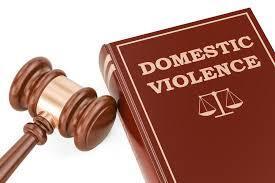Domestic Violence: Warning Signs and Solutions

Introduction
Domestic violence is one of the most serious issues affecting families, relationships, and communities around the world. It goes far beyond physical harm—it includes emotional, financial, psychological, and even digital abuse. Sadly, many victims remain silent, either out of fear, shame, or lack of awareness about available help.
Recognizing the warning signs of domestic violence and understanding possible solutions can save lives. This article explores the causes, effects, red flags, and the legal remedies available to victims, along with practical steps to break the cycle of abuse.
What is Domestic Violence?
Domestic violence is a pattern of abusive behaviors used by one partner to gain or maintain control over another. It can occur in marriages, dating relationships, families, or even among roommates.
Forms of domestic violence include:
-
Physical abuse: Hitting, slapping, choking, or any kind of physical harm.
-
Emotional abuse: Insults, humiliation, constant criticism, or threats.
-
Financial abuse: Withholding money, restricting access to bank accounts, or sabotaging employment.
-
Psychological abuse: Intimidation, manipulation, isolation, or gaslighting.
-
Digital abuse: Monitoring phone calls, tracking online activity, or harassment through social media.
The common thread among these forms of abuse is the abuser’s desire for power and control.
Warning Signs of Domestic Violence
It is not always easy to identify domestic violence, especially when victims try to hide what they are experiencing. However, certain warning signs can reveal abuse.
Physical Warning Signs
-
Frequent unexplained injuries such as bruises, burns, or broken bones.
-
Wearing long sleeves or sunglasses indoors to hide marks.
-
Regular visits to doctors or hospitals with vague explanations.
Emotional Warning Signs
-
Victim appears anxious, depressed, or withdrawn.
-
Low self-esteem, constant apologies, or fearfulness around their partner.
-
Victim avoids social interactions and becomes increasingly isolated.
Behavioral Warning Signs in the Abuser
-
Extreme jealousy and possessiveness.
-
Controlling behaviors such as monitoring the victim’s phone or preventing contact with others.
-
Explosive temper or frequent outbursts of anger.
-
Blaming the victim for problems in the relationship.
Identifying these warning signs is the first step toward intervention and safety.
Causes of Domestic Violence
While there is no excuse for abuse, several underlying factors can contribute to domestic violence:
-
Power and Control – Abusers often feel the need to dominate and control their partner.
-
Learned Behavior – Witnessing abuse as a child can normalize violence in adulthood.
-
Substance Abuse – Alcohol and drugs can intensify aggression and reduce self-control.
-
Economic Stress – Financial struggles sometimes escalate tensions in unhealthy relationships.
-
Cultural and Social Norms – In some communities, domestic violence is minimized, making it harder for victims to seek help.
Effects of Domestic Violence
Domestic violence has devastating impacts that extend far beyond the immediate harm.
-
On Victims: Chronic pain, injuries, depression, anxiety, PTSD, and in severe cases, death.
-
On Children: Witnessing violence can cause emotional trauma, behavioral issues, and difficulty forming healthy relationships later in life.
-
On Families and Communities: Domestic violence leads to broken families, lost productivity, and increased healthcare and legal costs.
The effects are long-lasting, making prevention and early intervention essential.
Why Victims Stay in Abusive Relationships
Many outsiders wonder why victims don’t simply leave, but the reality is complicated. Reasons include:
-
Fear of retaliation from the abuser.
-
Financial dependence and lack of resources.
-
Emotional attachment and hope for change.
-
Concern for children’s safety and custody battles.
-
Cultural stigma or shame associated with divorce or separation.
Understanding these barriers helps create more compassionate and supportive environments for victims.
Solutions: How to Prevent and Stop Domestic Violence
Preventing and addressing domestic violence requires both personal and systemic solutions.
1. Education and Awareness
Teaching young people about healthy relationships, respect, and equality can prevent future abuse.
2. Legal Protection
Victims can seek protective orders, restraining orders, and emergency custody arrangements to ensure safety. Attorneys specializing in family law, like those at the Law Office of PA, provide crucial legal support for survivors.
3. Support Services
Hotlines, shelters, and community organizations provide safe spaces, financial aid, and emotional support.
4. Counseling and Therapy
Both victims and abusers may benefit from professional therapy. Victims gain coping tools, while abusers can confront their behaviors.
5. Community Involvement
Neighbors, schools, workplaces, and faith-based organizations must play a role by raising awareness, supporting victims, and breaking the silence around abuse.
Role of Technology in Solutions
Technology is also playing a growing role in addressing domestic violence:
-
Hotline Apps: Allow victims to seek help discreetly.
-
GPS Alerts: Provide quick access to law enforcement in emergencies.
-
Online Counseling: Offers private access to therapy sessions.
-
Awareness Campaigns: Spread information on recognizing abuse and seeking help.
How to Help Someone Facing Domestic Violence
If you suspect someone is experiencing abuse, here’s how you can help:
-
Listen Without Judgment – Allow them to share their story without pressure.
-
Offer Support – Provide information about hotlines, shelters, and legal help.
-
Encourage Safety Planning – Help them create an escape plan with emergency contacts.
-
Respect Their Decisions – Understand that leaving is complex and may take time.
Conclusion
Domestic violence is a serious issue that destroys lives, but it is not inevitable. By recognizing the warning signs, understanding its causes, and providing effective solutions, society can take strong steps toward prevention.
Victims must know they are not alone—legal protections, counseling, and community support are available. Law firms, support groups, and local resources play a vital role in breaking the cycle of abuse.
With awareness, compassion, and strong legal action, we can move toward a safer, healthier future where every person lives free from violence and fear.







